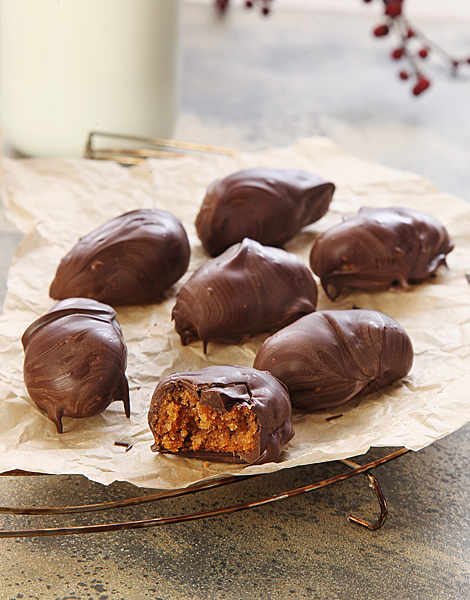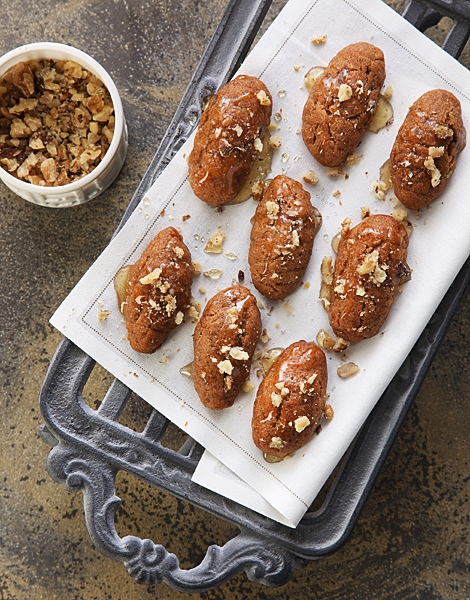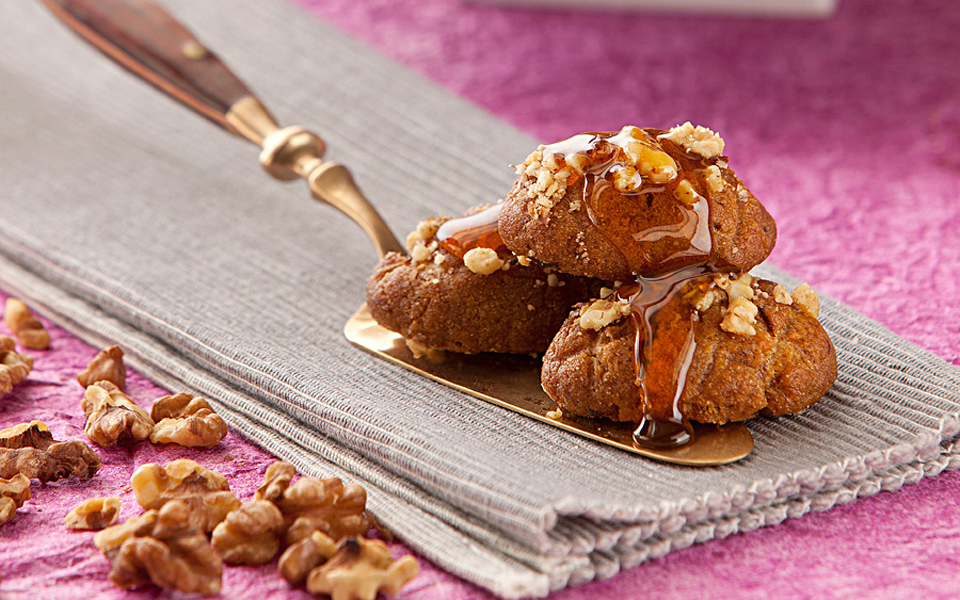Let’s start with the basics. Kourabiedes are a type of almond butter cookie covered in powdered sugar while melomakarona are syrupy cookies made with flour, olive oil and honey and topped with crushed walnuts; each have their ardent supporters. For Greeks the appearance of kourabiedes and melomakarona in the local bakery or in their grandmother’s kitchen are a sign that Christmas is fast approaching.
But let’s talk about melomakarona. First of all there are several competing schools of thought as to how they should be prepared with, for instance, different recipes based either on flour or semolina. Then, melomakarona aficionados can be broadly split into two camps: those who prefer their melomakarona to be steeped in honey with a soft, sticky center, and those who prefer them to be crispier and crunchier. The cookies can also be either long and oval-shaped or small and round, designed to be eaten in a single bite. Some fill their melomakarona with walnuts, while more commonly crushed walnuts are merely sprinkled on top.
More modern variations include dipping the cookies in melted chocolate. But a necessary condition for all recipes, new and old, is the use of plentiful honey. Indeed infusing the cookies with honey is considered the trickiest part of making melomakarona – the desired effect is for the cookies to uniformly absorb the syrupy mixture which is normally given added fragrance through the use of orange peel and a stick of cinnamon.


The use of honey has many primarily religious symbolic associations: traditionally it was thought to keep away bad luck and bring abundance, thus nourishing a household on a spiritual level as well as a literal one. The dough is made from olive oil, flour, sugar, baking soda, orange, cinnamon and cloves. Etymologically the ‘melo’ of melomakarona refers to the the honey while the ‘makarona’ is related to the Greek word for pasta and refers to the elongated shape of the traditional cookies. The latter is in fact a word that was first exported from Greek to Italian and then borrowed back again. In antiquity ‘makaria’ referred to a type of pie which was offered at funereal meals.
Most modern melomakarona recipes date to the mid 1800s. Of course many households consider theirs to be the ‘best’ recipe, honed over the decades and handed down from generation to generation as part of familial traditions. That said, at this point it should probably be pointed out that this author is more of a kourabiedes fan.
INFO
If you prefer them on the smaller side, opt for the offerings of Pastry Family (Rizari 19, Pangrati, Tel. (+30) 210.721.0987) which have a little crushed walnut hidden inside, or those of Alea (Leoforos Kifisias 258, Neo Psyhiko, Tel. (+30) 210.674.8510). In the city center the creations of Aristokratikon are delicious (Voulis 7, Syntagma, Tel. (+30) 210.322.0546) while towards the district of Exarheia, those produced by the Asimakopoulos Bros (Harilaou Trikoupi 82, Tel. (+30) 210.361.0092) and made with flour and semolina have an intriguing crunch.










